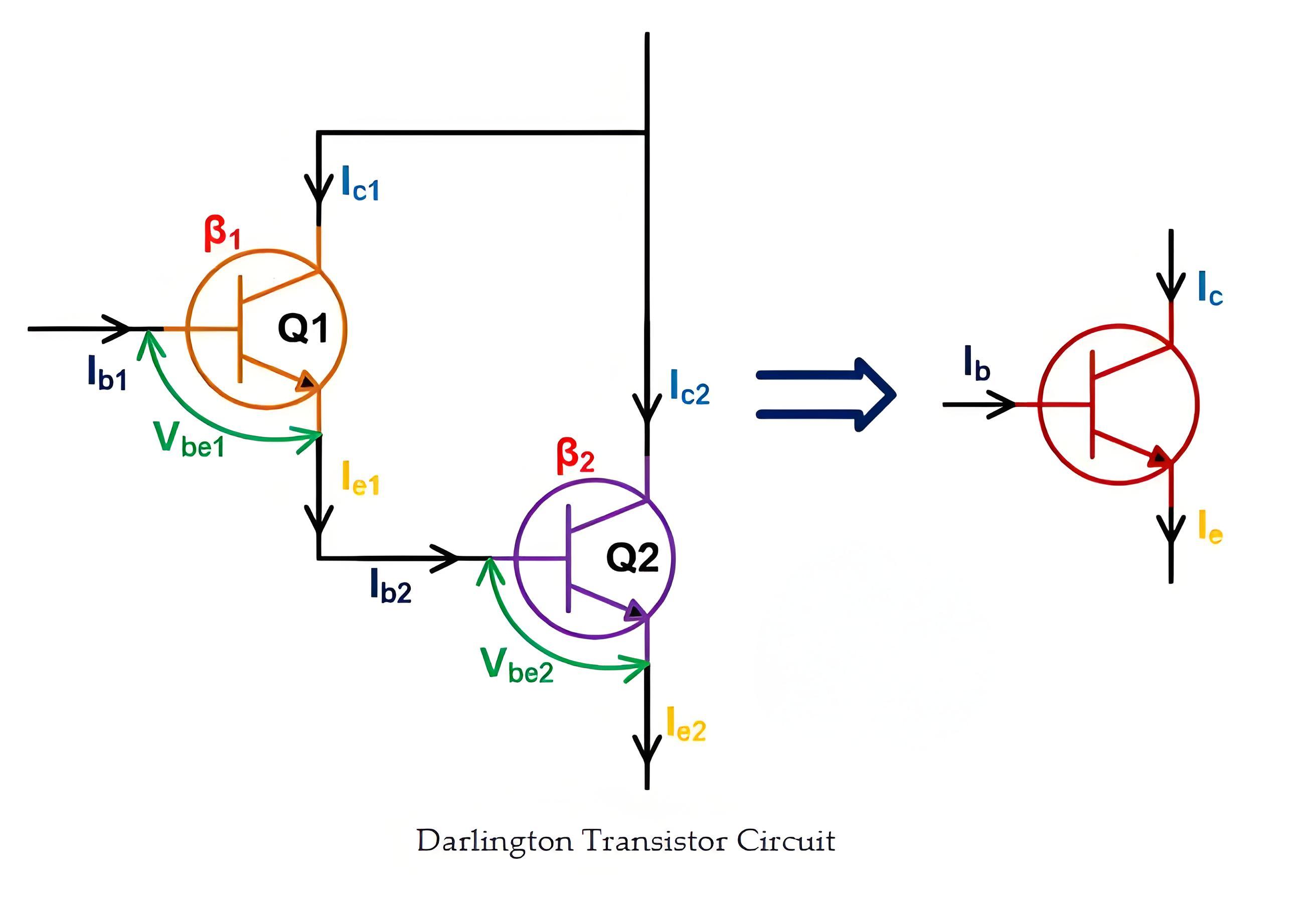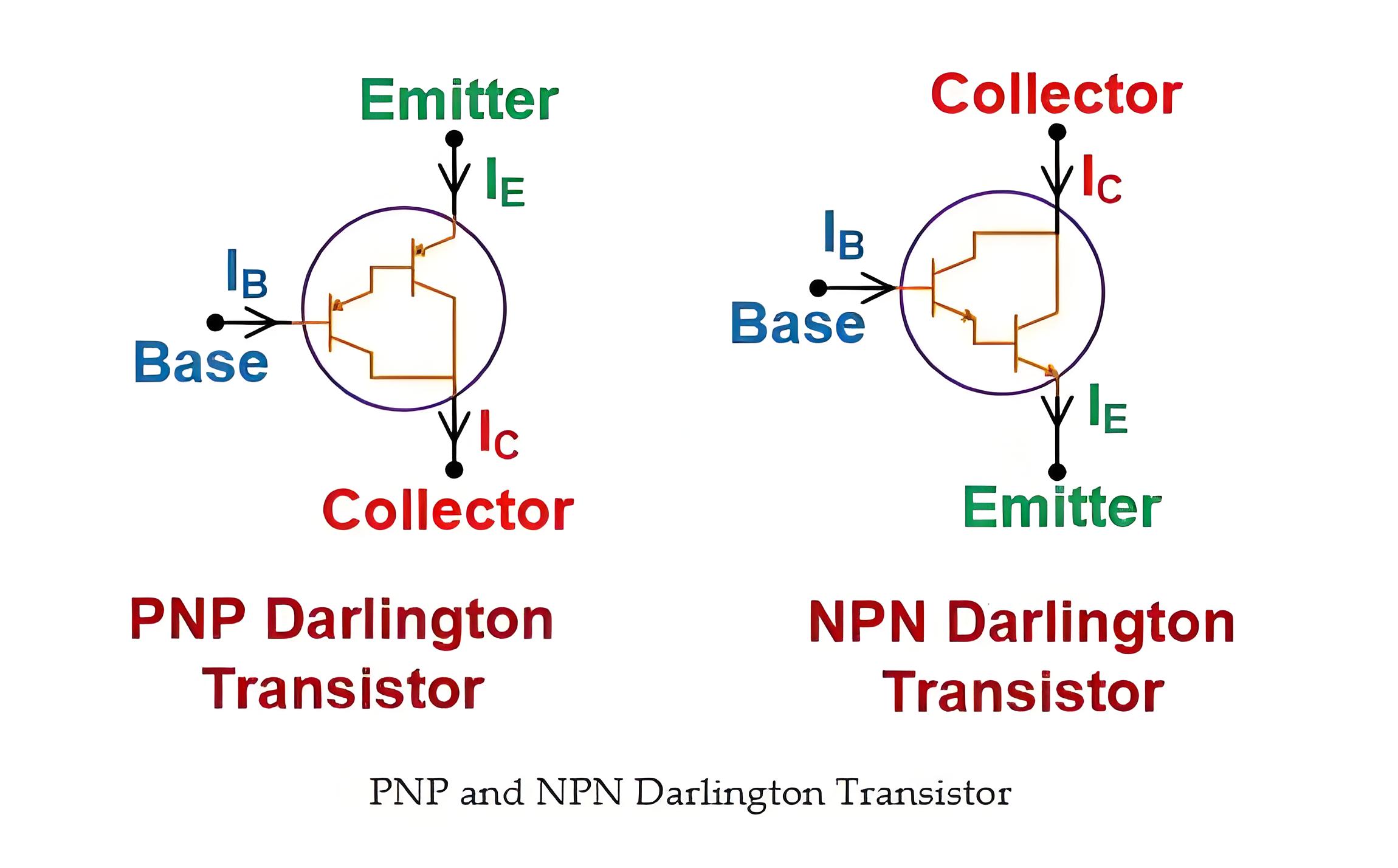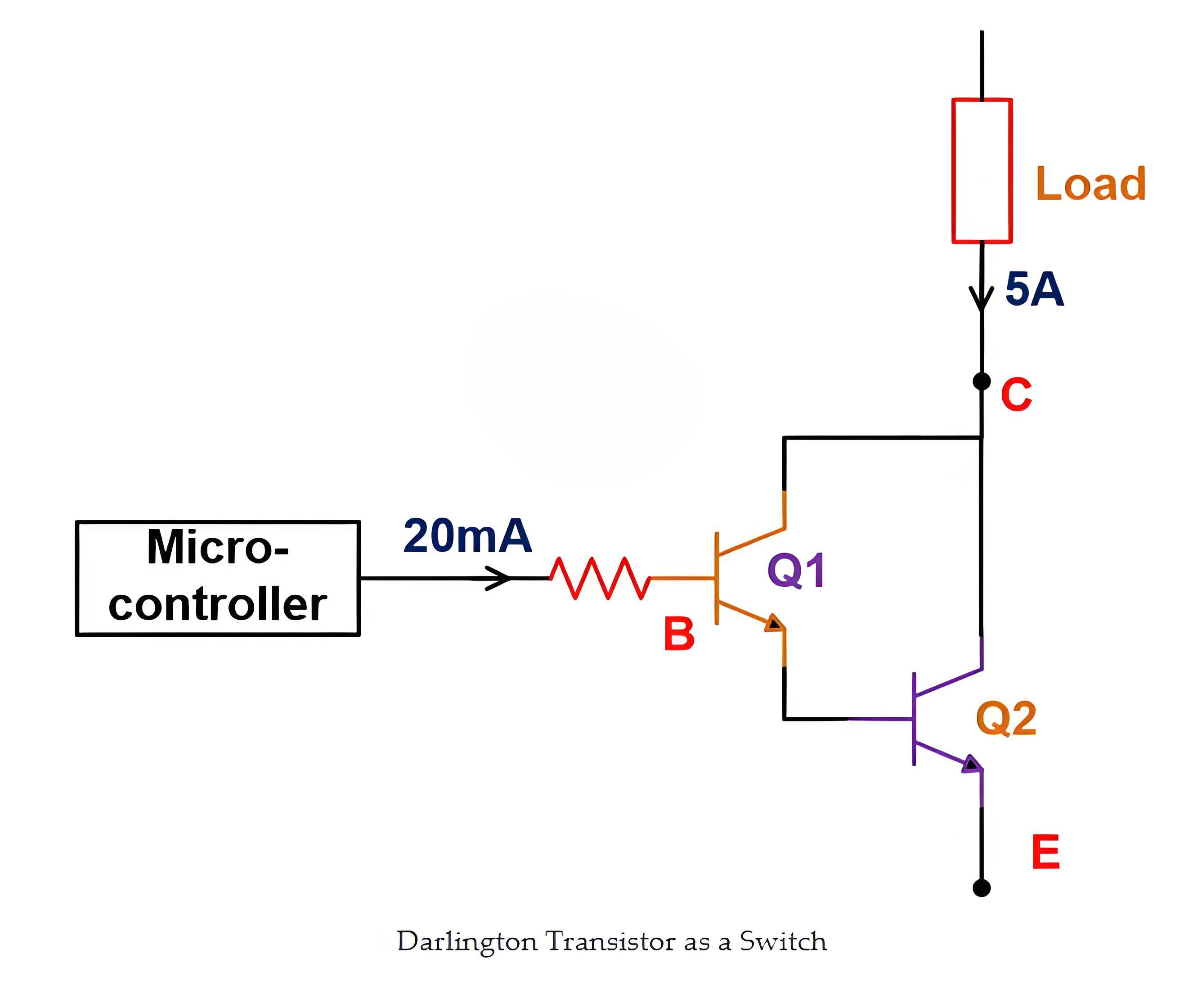What is a Darlington Transistor?
What is a Darlington Transistor?
Darlington Transistor Definition
A Darlington transistor is a semiconductor device that pairs two BJTs to achieve a very high current gain, functioning as a unified component.
Darlington Transistor Circuit
The Darlington Transistor consists of two PNP transistors or NPN transistors connected back to back. It is a single package with a common collector terminal for both transistors.
The Emitter terminal of the first transistor is connected with the base terminal of the second transistor. Hence, the base supply is given only to the first transistor, and the output current is taken only from the second transistor. Therefore, it consists of only one base, emitter, and collector as shown in the below figure.

Current Amplification
The current gain of a Darlington pair is significantly higher than that of standard transistors, making it ideal for applications needing strong amplification.
PNP and NPN Darlington Transistor
If the Darlington pair consists of both PNP transistors, it makes PNP Darlington Transistor. And if the Darlington pair consists of both NPN transistors, it makes NPN Darlington Transistor. The connection diagram of NPN and PNP Darlington Transistor is as shown in the below figure.

For both types of transistors, the Collector terminal is common. In the PNP transistor, the base current is given to the emitter terminal of the second transistor. And in NPN transistor, the emitter current is given to the base terminal of the second transistor.
Darlington transistors require less space than two separate transistors because they share a common collector terminal.
Darlington Transistor Switch
Let say we want to turn ON and OFF a load using a microcontroller. To do this task, first, we use an ordinary transistor as a switch, and second, we use a Darlington transistor. The circuit diagram of this configuration is as shown in the below figure.

Advantages of Darlington Transistor
A Darlington transistor (i.e. a Darlington pair) has several advantages compared to the normal transistor. They have been summarized in the list below:
The main advantage of a Darlington transistor is the high current gain. So, a small amount of base current can trigger the transistor.
It offers high input impedance which translates into an equal decrease in output impedance.
It is a single package. So, it is easy to configure on a circuit board or PCB compared to connect two different transistors.
Disadvantages of Darlington Transistor
The disadvantages of a Darlington transistor (i.e. a Darlington pair) have been summarized in the list below:
It has a slow switching speed.
The base-emitter voltage is almost two times compared to a normal transistor.
Due to high saturation voltage, in such an application, it dissipates high power.
The bandwidth is limited.
The Darlington transistor introduces a phase shift at a certain frequency in the negative feedback circuit.
The Electricity Encyclopedia is dedicated to accelerating the dissemination and application of electricity knowledge and adding impetus to the development and innovation of the electricity industry.













